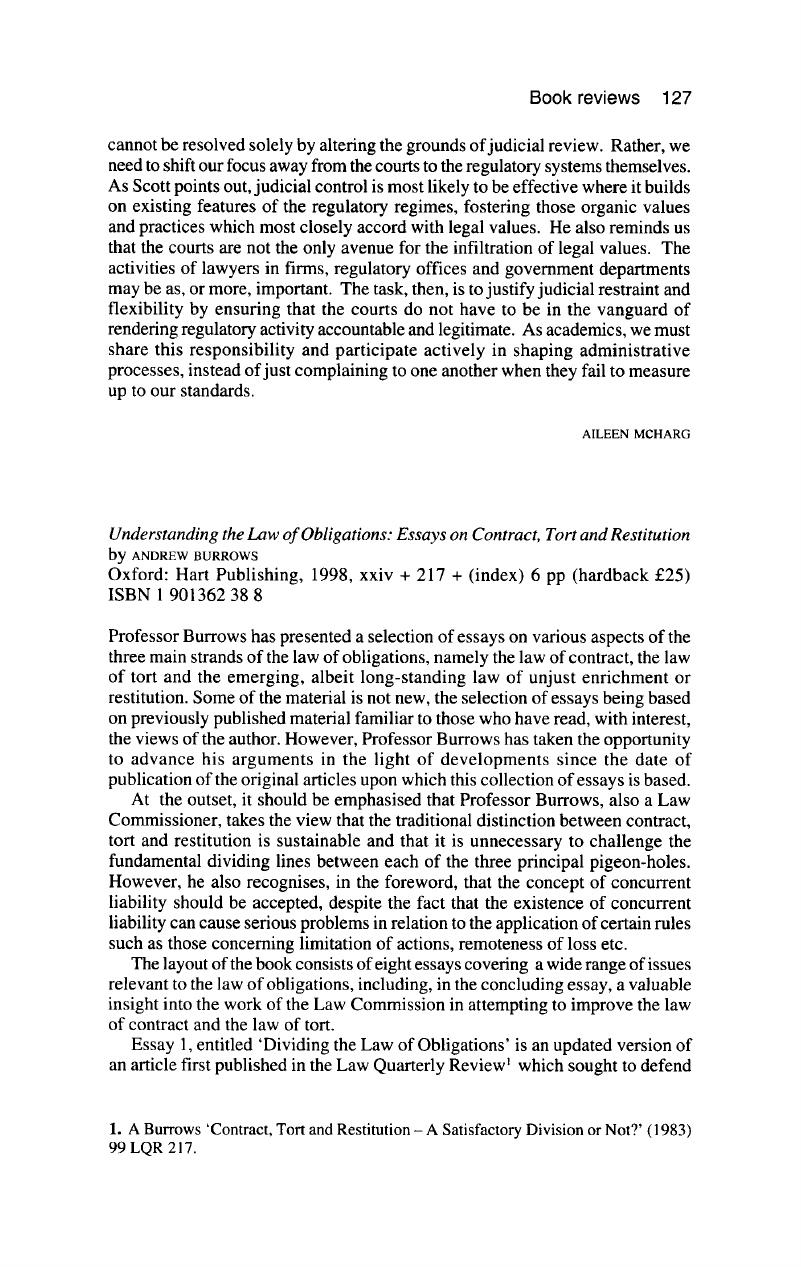No CrossRef data available.
Published online by Cambridge University Press: 02 January 2018

1. A Burrows ‘Contract, Tort and Restitution - A Satisfactory Division or Not?’ (1983) 99 LQR 217.
2. In one respect, the distinction, as stated, is itself unsatisfactory because the term ‘restitution’ cannot be placed alongside the terms ‘contract’ and ‘tort’, since restitution, like compensation and punishment, is a legal response to a specified event. That specified event, for the purposes of restitution is an unjust enrichment. In contrast, contract and tort are events in themselves, to which there is a legal response. Accordingly, the correct categorisation should be contract, tort and unjust enrichment. See P Birks The Classification of Obligations (Oxford: Clarendon Press, 1997) p 20.
3. P S Atiyah The Rise and Fall of Freedom of Contract (Oxford: Oxford University Press, 1979); P Atiyah ‘Contracts Promises and the Law of Obligations’ (1978) 94 LQR 193.
4. Sir R Cooke ‘Tort and Contract’ in P Finn (ed) Essays on Contract (North Ryde, NSW: Law Book Co, 1987) p 222.
5. S Hedley ‘Contract, Tort and Restitution: or, On Cutting the Legal System Down to Size’ (1988) 8 LS 137.
6. J Stapleton ‘A New Seascape for Obligations: Reclassification on the basis of the Measure of Damages’ in P Birks (ed) The Classification of Obligations (Oxford: Clarendon Press, 1997) p 193. See also ‘The Normal Expectancies Measure in Tort Damages’ (1997) 113 LQR 257.
7. D Friedmann ‘The Performance Interest in Contract Damages’ (1995) 111 LQR 628.
8. A Burrows Understanding the Law of Obligations (Oxford: Hart Publishing, 1998) p 5, citing from (1983) 99 LQR 217 at 244, 258.
9. See eg Williams v Roffey Bros & Nicholls (Contractors) Ltd (1991) 1 QB 1.
10. Entitled ‘Solving the Problem of Concurrent Liability’.
11. Eg Ross v Caunters (1980) Ch 297; White v Jones (1995) 2 AC 207.
12. This argument appears similar in effect to that of J Stapleton ‘The Normal Expectancies Measure in Tort Damages’ (1997) 113 LQR 257, where she distinguishes the ‘entitled result’ measure of damages from the ‘normal expectancies’ measure of damages. The latter assumes that once an act is undertaken, it will be executed with reasonable care and that, if it is not, the actor should be liable not just for making the plaintiffs position worse, but also for any normal expectancy the plaintiff might have. As such, the award of damages does not involve making the plaintiff better off, but merely preserves the normal expectancy measure.
13. See eg P Cane Atiyah's Accidents, Compensation & the Law (London: Butterworths, 1993); P S Atiyah The Damages Lottery (Oxford: Hart Publishing, 1997).